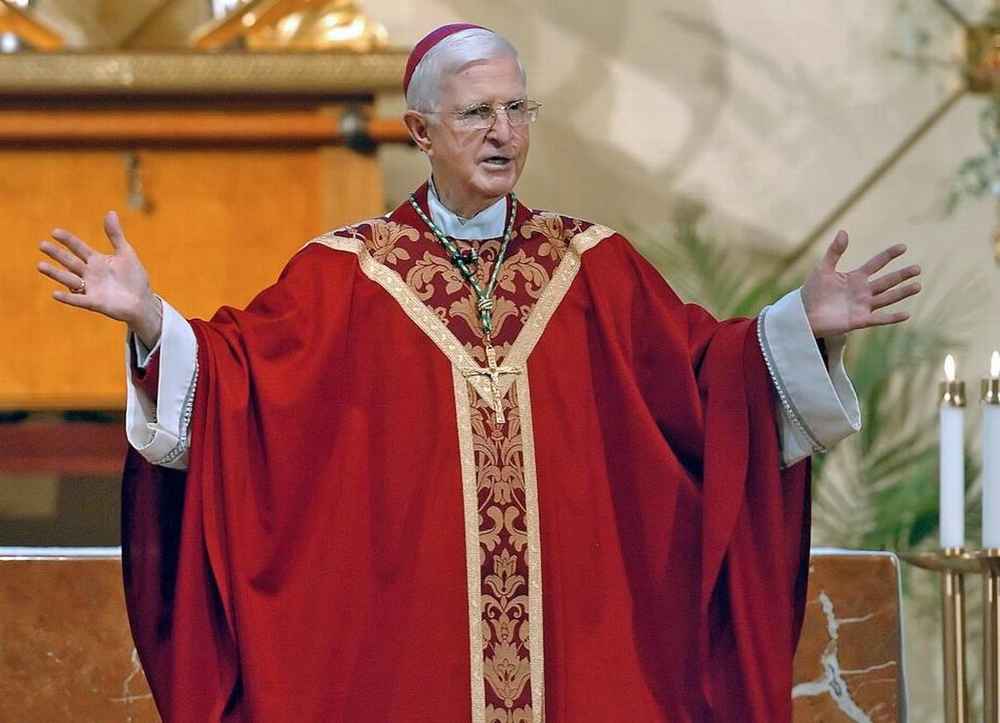A Shepherd to the End

Bishop William Curlin, bishop emeritus of the Diocese of Charlotte, North Carolina, who established the Federal Association region there, died on December 23. He lived the last months of his life as he had lived his priesthood of more than 60 years—pouring out his life for others.
As he neared, then passed, his 90th birthday, age and infirmity restricted him. He was forced to relinquish many of the activities that had occupied his retirement: Confirmations, special Masses and retreats, and accompanying beloved malades to Lourdes.
Yet he remained a shepherd till the end, a joyful and indefatigable worker in God’s vineyard.
His apostolic labors had once spanned the globe. In the last months of his life, they narrowed to his modest home in the Beverly Woods neighborhood of Charlotte. But they were no less fruitful for that.
There he ministered every day to a stream of visitors who sought his guidance, comfort, and prayers. And there he showed what he himself had witnessed in the life of his friend, Mother Teresa—the joy of loving Jesus, even as earthly consolations and blessings are stripped away.
I know because I was there.
I was one of about 40 men and women who had the privilege of caring for Bishop Curlin and keeping him company during his final months. Our group included longtime friends of the bishop as well as members of the Order.
For more than 20 years, Bishop Curlin had shown the knights and dames of Malta how to live out our charism of caring for the poor and the sick, giving not just our service but our hearts.
As he neared the end of his life we gave our hearts to him.
Our care for Bishop Curlin was not medical. We were there to accompany him, to share our friendship, and help him maintain independence.
As his body weakened, we wanted him to remain in his home so he could continue to feed the deer that visited nightly and to spoil his two Chihuahuas.
Above all we wanted to help him remain with the Lord, whose sanctuary lamp flickered in the small chapel across from his bedroom.
Sometimes we would bring him meals. But just as often he would prepare meals for us, insisting that we sit as he microwaved and served our Marie Callendar chicken pot pies, and remain seated as he rose haltingly to clear the table. “Bishops should do dishes,” he’d say with a smile as he picked up our plates and shuffled to the sink.
His smile he bestowed unstintingly, every time we came for a visit, every time we left, and so many times in between. “That was his gift,” said his dear friend and nurse, Paula Knish. “Bishop Curlin made each one of us feel that we were the apple of his eye.”
After dinner we would go to the living room, surrounded by pictures painted by his talented mother and by furniture handcrafted by his stepfather.
He’d take a lively interest in our lives, families and work. He’d tell stories of his childhood, youth, and priesthood, of his encounters with Archbishop Sheen and the actress Helen Hayes, of Pope Paul VI and St. John Paul II, and above all of Mother Teresa.
“There is no greater joy than loving Jesus in the darkness,” Mother Teresa told Bishop Curlin.
What a privilege it was to have these words handed down by Bishop Curlin in the intimacy of his family room.
And what a powerful experience it was to see him live that joy to the very end. As his powers diminished and his frailty increased, his joy in the Lord, and love of him for love alone, shone all the more brightly.
